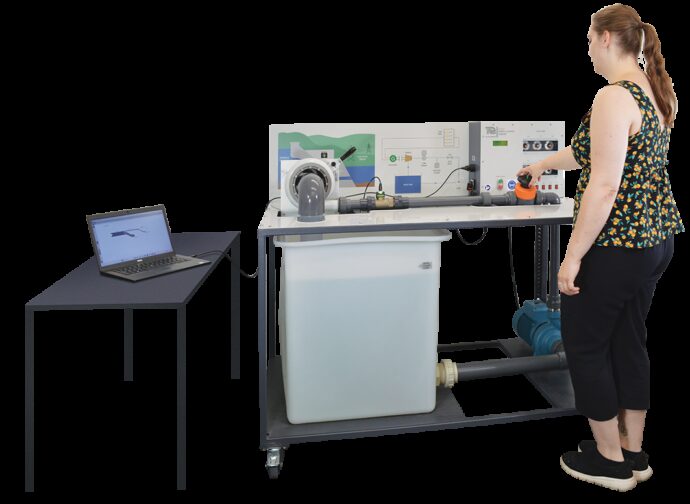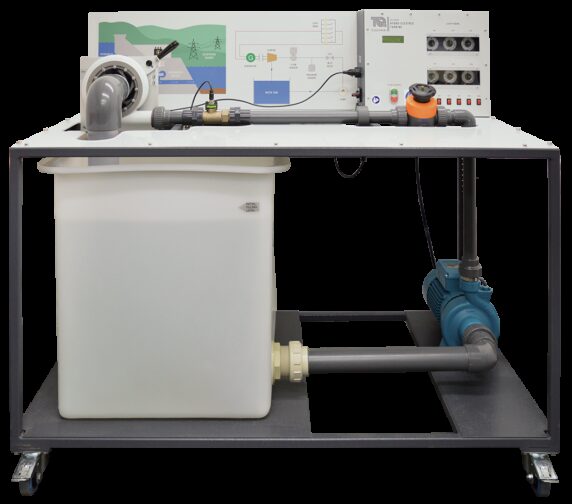Experimento
AE1000V

Turbina hidro-eléctrica
La turbina hidro-eléctrica de TecQuipment es un aparato autónomo, versátil y de piso para la demostración de energía hidro-eléctrica. Se suministra con cinco hélices diferentes. El product se centra en explorar el mejor punto de eficiencia de diferentes hélices y realizar investigaciones energéticas para analizar el rendimiento del sistema.
If you have any questions or you'd like to discuss a product, please call us.
+44 1159 722 611Turbina hidro-eléctrica
The AE1000V Hydro-Electric Turbine is a self-contained, floor-standing system consisting of a water tank, propeller turbine and pump mounted below the pump controls, sensors, generator, control panel and turbine.
Water flows around the system controlled by a diaphragm valve on the system bench. The water passes through a pressure sensor and flow meter which are connected, along with the generator output, to VDAS® Onboard for analysis and the calculation of power and speed. From the generator constants, power and efficiency can be calculated.
The turbine is fitted to the left-hand end of the bench. The propeller is fixed on a shaft within a see-through enclosure and connects directly to the generator which is located between the turbine and the back plate. The turbine is supplied with five standard propellers. Information is provided for the user to design and 3D-print their own propellers for further experimentation.
A system mimic is displayed on the backplate.
The control box features a display screen for reading experiment inputs as well as output measurements, such as current, voltage, power and speed. A VDAS® output allows connection to a computer via USB. The control box also contains a light bank for visualisation of the power generated.
Controls for the operation of the product are on the control panel for:
• Pump on/off
• Light bank switches
Learning outcomes
Comprehensive demonstration and investigation into the foundations of hydro electric energy conversion including:
• Simulate the concept of Hydroelectricity and determine power curves by varying the pump discharge and variable load light bank, as domestic load.
• Effect of number of blades on the system efficiency. Compare efficiencies of different blade variants and determine best efficiency point (BEP).
• Effect of blade angles on the system efficiency. Compare efficiencies of different angle variants and determine best efficiency point (BEP).
• Study about hydraulic efficiency, electrical efficiency, and overall efficiencies.
• Effect of domestic load acting as power consumption and formulate energy audit of system using Sankey diagram.












